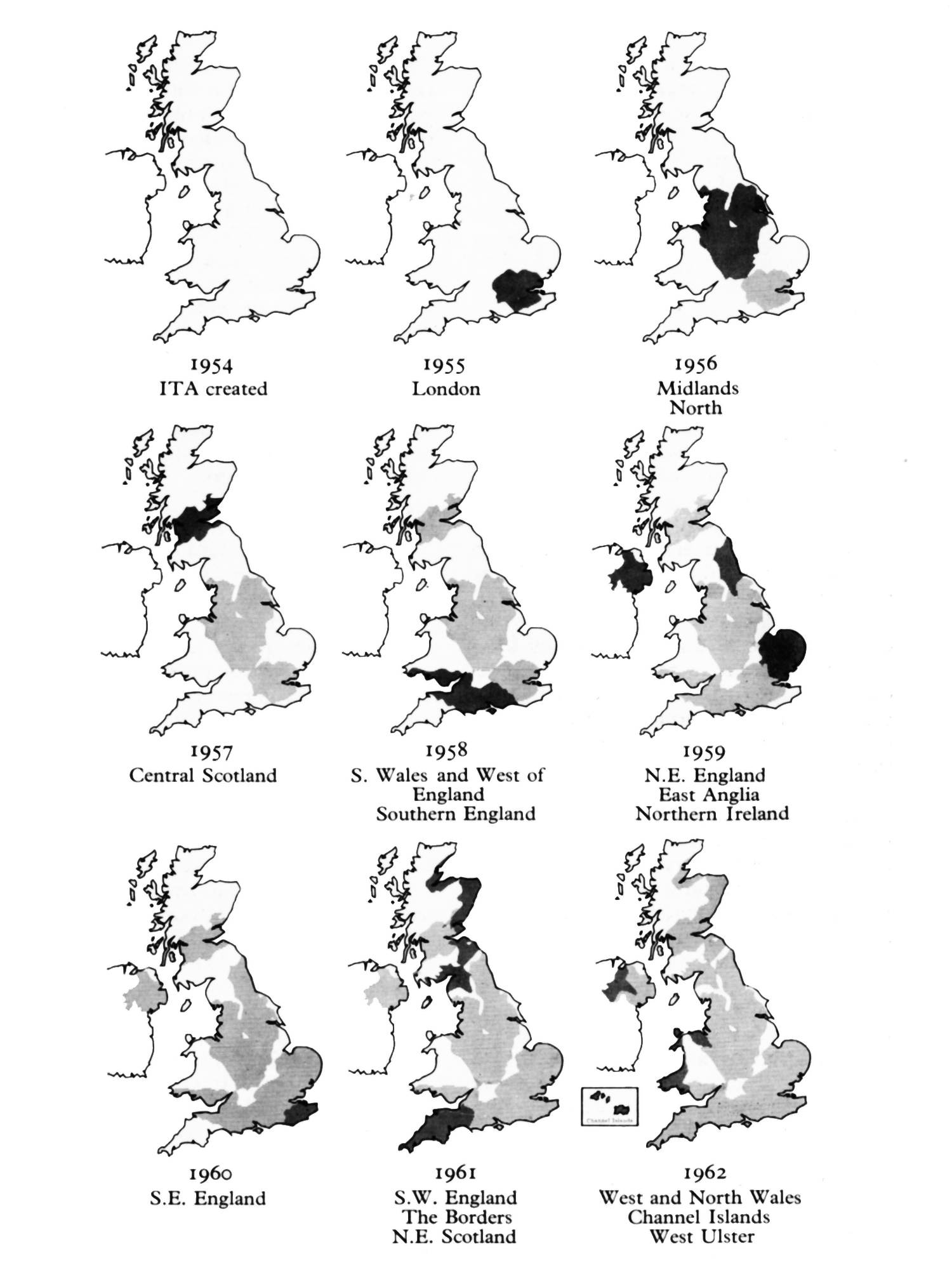This system of interrelated companies, technical installations and control arrangements operates under the direct control of the Independent Television Authority. The Authority usually consists of a Chairman, Deputy Chairman, and eight Members. The Members of the Authority serve in a part-time capacity, though the Chairman is expected to make the work of the Authority his main interest. Three of the members have as their special care the interests of Scotland, Wales and Northern Ireland respectively. Members are appointed by the Postmaster-General “from among persons appearing to him to be qualified for the Office”, and the Minister is required to satisfy himself that they have no outside interests likely to affect prejudicially their conduct as members. Meetings of the Authority are held every three weeks, generally at its headquarters in London, but several times a year meetings are held in centres of Independent Television production in other parts of the United Kingdom. At the meetings the Authority’s policy is determined and all aspects of its work are reviewed.
The head of the Authority’s permanent staff is the Director-General, Sir Robert Fraser, O.B.E. The Authority employs a staff of about 550 people, of whom about 180 are headquarters administrative and technical staff, 350 technical staff manning the transmitters and 17 regional staff.
The main formal channel of communication between the Authority and the programme companies is a Standing Consultative Committee (SCC). Senior executives of each company and senior staff of the Authority attend the monthly meetings of ,this committee which sits under the chairmanship of the Authority’s Director-General. Between meetings a constant flow of information and consultation between the Authority’s officers and each company ensures that the Authority’s policy is understood and carried out. Through its Regional Officers the Authority is represented in the Regions. These officers are responsible for the day-to-day surveillance of the Independent Television output in their areas, as well as for liaison with local authorities, voluntary bodies and members of the public.
The Authority is advised by committees of experts in the field of Religion, Children’s and School programmes, Adult Education, and the control of advertisements.
Finance
Independent Television is financially self-supporting. No charge falls on public funds. Under Section 10 of the Television Act the Authority is charged
so to conduct its affairs as to secure that its revenues become at the earliest possible date, and thereafter continue, at least sufficient –
(a) to meet all sums properly chargeable to revenue account (including sums required for the repayment of loans and interest thereon, for provision for depreciation and/or the establishment and maintenance of their reserve fund); and
(b) to make provision towards, and as soon as practicable for necessary capital expenditure.
To enable the Authority to start operations, it was empowered under Section 12 of the Act to borrow from the Postmaster-General, with the consent of the Treasury, up to £2 million initial capital in its first five years. In fact, it proved necessary to borrow only £555,000, and this sum was wholly repaid by the middle of 1959. The Authority’s responsibilities under Section 10 are therefore fulfilled, both its revenue expenditure and its capital investment programme being paid for entirely out of the revenue from the programme companies.
Advertising
A full account of the provisions of the Act regarding the inclusion of advertisements in the programmes and of the Authority’s responsibilities in the advertising field is given in the chapter “Advertising Control”.
Two salient points are:
(i) Sponsorship is not allowed; advertisers are not allowed to supply, suggest or take credit for programmes. They may only buy time in the programmes in the same way as they would buy space in the press.
(ii) The frequency and permitted amount of advertising in the programmes are controlled by the Authority.

